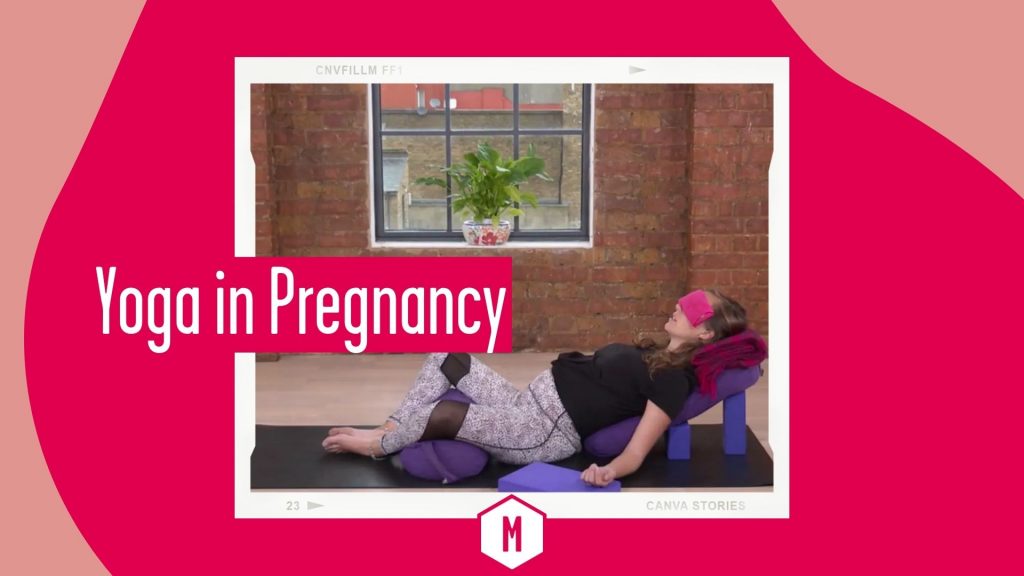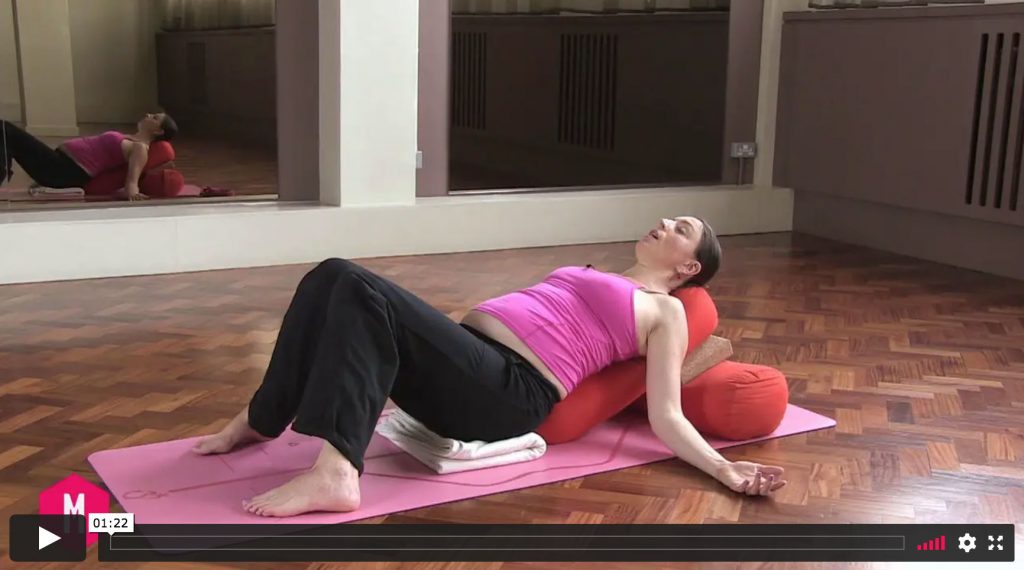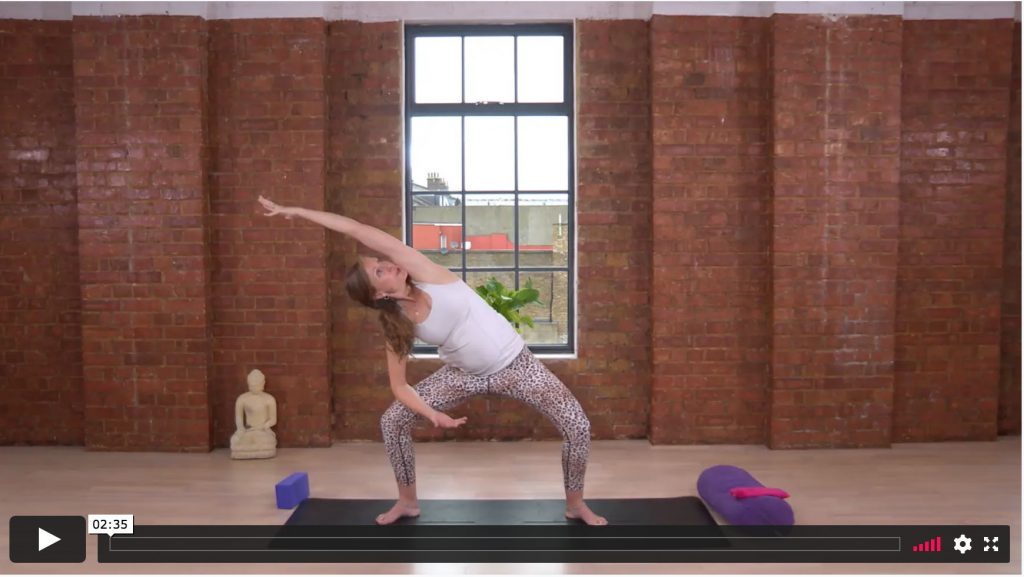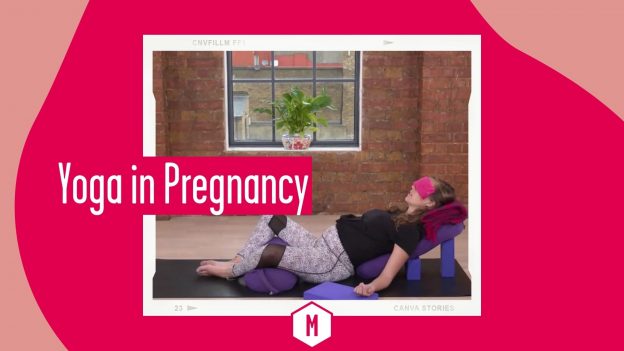
Yoga in Pregnancy can be a much needed support. You are preparing for the arrival of a new baby, and also for the post-birth stages. Find out how yoga can help.
Pregnancy is a time when your body is undergoing many changes, and yoga in pregnancy, done safely and with awareness, can be a huge benefit to you, physically, emotionally and mentally, as you venture on this journey of motherhood.
Physical Benefits
- Boosts energy levels and maintains your overall health
- Strengthens muscles needed for birth
- Keeps the body supple and flexible, which will helps you to adapt to various positions when in labour, reducing discomfort.
- Releases tennsion and muscle tightness that can build up in pregnancy
- Builds stamina and strength for hips, back, arms and shoulders (helping you to carry more weight as your baby grows!)
- Relieves lower back pain and improves your posture and alignment
- Helps to prepare you for birth as you become more aware of body and breath
- Cultivates breathing techniques – equipping you with tools to stay calm at moments when you will need it most.
Emotional Benefits
- Relief of stress and anxiety
- A regular yoga and meditation practice can help you deal with fears around birth and of the future.
- Calming for the nervous system, which results in better digestion, healthier sleep rhythms and a stronger immune system
- It is time for YOU to connect to both the changes happening to your body and with your baby growing inside your body.
- Builds confidence and trust in your capabilities and strengths.
Mental Benefits
- It calms and quietens the mind
- Helps you to relax and become more present, out of your head and centred in your body.
- It calms the mind and invites a sense of ease and peace.
- Mental peacefulness, and more trust and confidence in the journey, promotes deeper relaxation and more restful sleep.
On MFML there are many specifically designed yoga practices for pregnancy, and these are taught by skilled pre-natal yoga teachers. This is your first point of call, especially if you are starting your yoga journey once you are already pregnant!
However, having said this… sometimes you just want to join your favourite teacher and you miss attending your favourite class. The question is… How do you modify a general yoga class and what to be aware of if you are practicing yoga whilst pregnant?
Here are some tips and modifications, just as your teacher would offer to you during a class, so you can practice safely and with an honouring of the changes your body is going through.
In these days with home practices, the most important thing to remember is to stay present and listen to your body and baby – take rest and take care when necessary – and any doubts it is advised to speak to a professional.
Note: Be especially careful during pregnancy if you have any risks or complications, in this case it is recommended to consult your doctor before undergoing any new exercise routine.
1st trimester
This is a crucial and delicate time so please be especially careful. Please note that many doctors advise you to rest during the first trimester. Only practice yoga if you already have an existing yoga practice and please only practice very gently and well within your comfort zone.
Relaxin Hormone
When you are pregnant your body is releasing more relaxin hormone. The function of this hormone is to relax the cervix and ligaments during birth. It serves as a lubrication and loosens the joints and ligaments around the pelvis (also to help with birth). This loosening and relaxing can temporarily offer you more flexibility than before.
While practicing yoga it is important to be aware of this as it could cause you to overstretch and destabilise the joints around the pelvis.
The suggestion: Avoid deep stretching, and if you are practicing yin or restorative, make sure you have more support than usual, using bolster, blocks and blankets. This way you get the benefit of the stretch but you are not holding at your deepest capacity and not overstretching the ligaments.
Abdominal work
You might have heard you should avoid abdominal work in pregnancy BUT in fact strengthening your abdominals when you are pregnant can support your pelvic floor muscles and lower back – which are areas that need extra support as your bump gets bigger and after birth.
There are just some modifications that you need to be aware of especially as your bump gets bigger.
- Avoid putting pressure on the front abdominal wall (for example full rolling up/crunches) – we don’t want to compress the stomach (AKA baby’s space!)
- Avoid bicycle abdominal work – the twisting element is another movement than can cause compression and restriction around the abdominals
- You can work more with the side obliques and isometric movements – You can try leg raises from ‘vishnu’s couch’ position
- Plank – as your baby gets heavier it can be more challenging to hold the weight of your body in plank without compromising the position of your lower back. Some of you may not need to modify planks at all, but if you do, you can simply lower your knees down. Another modification here is to come into hands and knees and then hover your knees 1-2 inches off the floor. This puts less pressure on the lower back but you can still build transverse abdominal strength.
Cross Body twisting
Pretty much as soon as a bump starts to appear, it means your baby is trying to grow! And as the baby is growing we want to give it as much space as it needs – and not cramp its space with abdominal crunches or cross body twisting.
Whenever you are practicing yoga thinking about if the twist is requiring you to cross your midline, and therefore compress the space in your belly (think of anything revolved e.g. revolved triangle, revolved half moon, half fish pose)
Once you are aware of this, this is an easy one to modify – you can simply twist the opposite way – and ‘open twist’.
Inversions
The first thing to say here super clearly, is that if you haven’t practiced inversions before pregnancy then don’t start trying to learn whilst pregnant.
However if they were part of your practice before and if you are comfortable upside down then inversions are not only perfectly safe, they can also offer relief for you to take the weight off your legs and reverse the gravitational pull!
Whatever you choose to practice – it is important to be aware of your energy levels as you’re growing a human and that takes effort! Sometimes things you could do with ease before feel a bit more challenging and clunky. It is important to respect that.
Laying on your back/front
Laying on your back: It is generally recommended that past 20 weeks you avoid laying on your back – talk to your doctor about it and do what is best for you.
- Suggestion: Svasana – Foetal position on your side
Laying on your front: It is logical that as your baby bump gets bigger it will become less comfortable for you and also less comfortable for baby if you lay on your belly!
Suggestions:
- Cobra – if you have the strength you can take updogs instead of cobra, otherwise you can take (Cat) Cow pose. Another option is to put a folded up blanket under your hips so you have a bit more space between your belly and the floor (this will only work up to a certain point!)
- Bow/Locust – take another back bend that isn’t belly down, for example Camel.
Breath work/pranayama
Most breathing techniques are perfectly fine – in fact GREAT – to practice in pregnancy. They can be super tools for you to use during pregnancy for relaxing the nervous system, inducing deeper sleep, and also calming any fears of what is to come!
The breathing practices are also going to come in handing during birth and labour!
However, experts recommend that you should avoid holding the breath whilst you are pregnant. This is because you don’t want to potentially reduce the amount of oxygen flow to your baby.
Make sure you are practicing the techniques right – if in doubt ask your teacher to double check!
Body/baby awareness & energy levels
Most importantly, remember you are growing a human!! Your energy levels could be very different as a lot of your most potent resources are going towards development of the baby.
When you are practicing yoga, and also as you do anything in your day, be respectful and loving to yourself, your baby and the process you are going through.
Take care to listen to signs and signals you have in your body and use that as your own inner guide and teacher, to know when to take rest and what feels good for your practice.
Two suggested classes, one more dynamic and recommended from the second trimester onwards, and the other more restorative and can be practiced at any point in your pregnancy.
Remember that with following the guidelines above (and consulting a teacher if you have personal questions) you can pick any of the practices on MFML and just adapt and modify to suit your stage of pregnancy and energy levels.
ALL TRIMESTERS: RELAX & RESTORE

A simple and nurturing practice for when you’re tired and need that extra TLC.
Pregnancy yoga: Truth & Trust (Second trimester onwards)

This class focuses on deep, inner listening, of being able to trust the process of your pregnancy and your own truth. A fabulous yummy all round practice that strengthens and opens the body in preparation for birth and beyond.





Leave a Reply